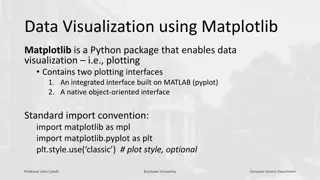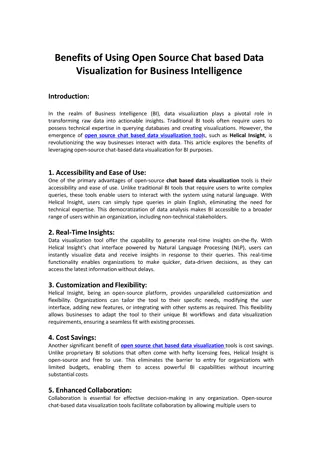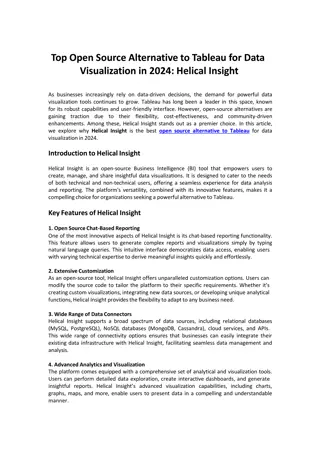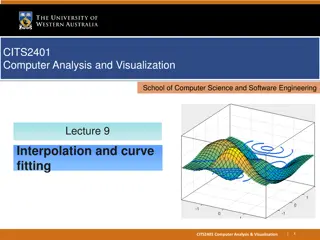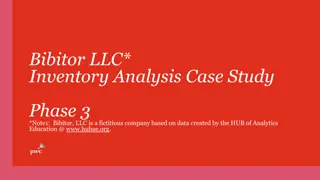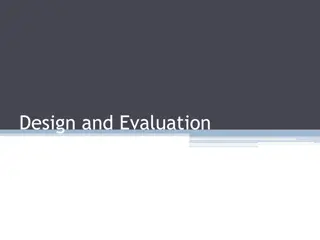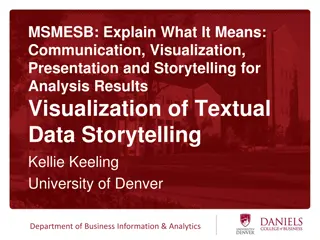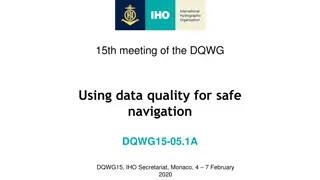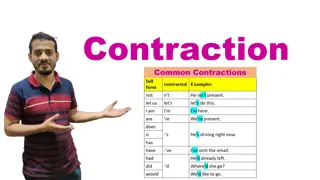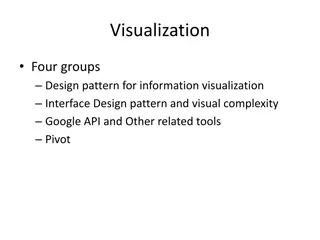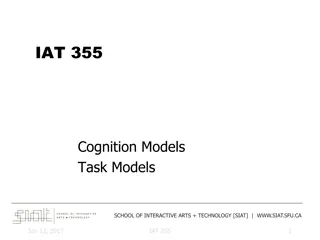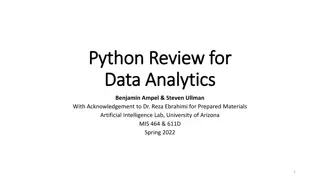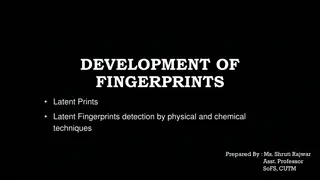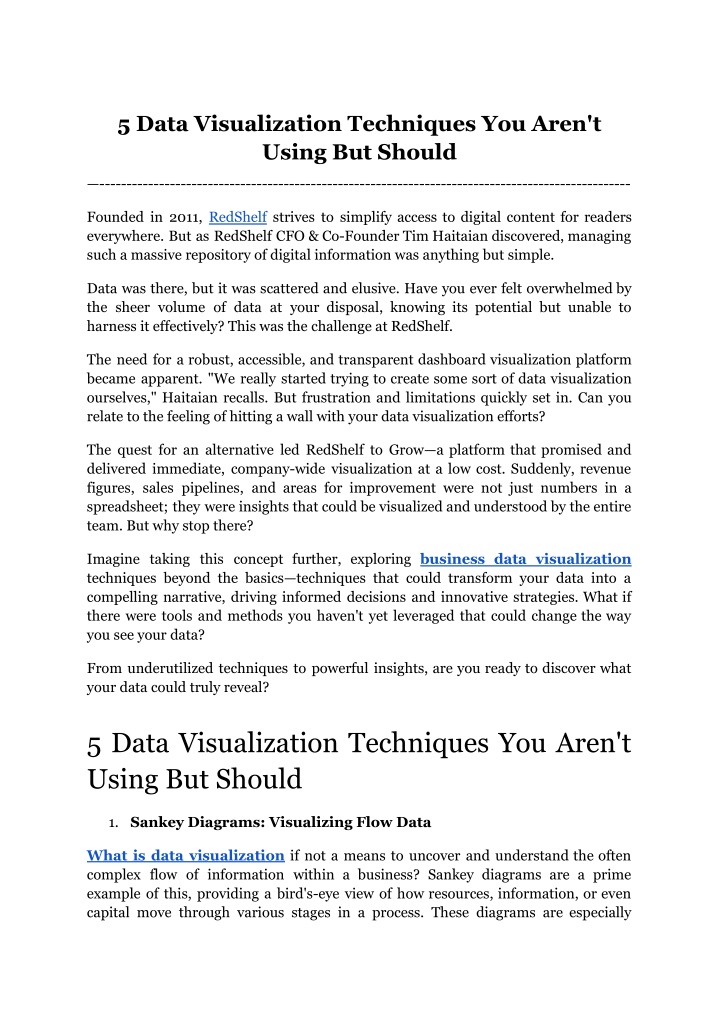
5 Data Visualization Techniques You Aren't Using But Should
nUnlock the potential of your data with our exploration into innovative business data visualization methods that go beyond the basics.
Download Presentation

Please find below an Image/Link to download the presentation.
The content on the website is provided AS IS for your information and personal use only. It may not be sold, licensed, or shared on other websites without obtaining consent from the author. If you encounter any issues during the download, it is possible that the publisher has removed the file from their server.
You are allowed to download the files provided on this website for personal or commercial use, subject to the condition that they are used lawfully. All files are the property of their respective owners.
The content on the website is provided AS IS for your information and personal use only. It may not be sold, licensed, or shared on other websites without obtaining consent from the author.
E N D
Presentation Transcript
5 Data Visualization Techniques You Aren't Using But Should -------------------------------------------------------------------------------------------------- Founded in 2011, RedShelf strives to simplify access to digital content for readers everywhere. But as RedShelf CFO & Co-Founder Tim Haitaian discovered, managing such a massive repository of digital information was anything but simple. Data was there, but it was scattered and elusive. Have you ever felt overwhelmed by the sheer volume of data at your disposal, knowing its potential but unable to harness it effectively? This was the challenge at RedShelf. The need for a robust, accessible, and transparent dashboard visualization platform became apparent. "We really started trying to create some sort of data visualization ourselves," Haitaian recalls. But frustration and limitations quickly set in. Can you relate to the feeling of hitting a wall with your data visualization efforts? The quest for an alternative led RedShelf to Grow a platform that promised and delivered immediate, company-wide visualization at a low cost. Suddenly, revenue figures, sales pipelines, and areas for improvement were not just numbers in a spreadsheet; they were insights that could be visualized and understood by the entire team. But why stop there? Imagine taking this concept further, exploring business data visualization techniques beyond the basics techniques that could transform your data into a compelling narrative, driving informed decisions and innovative strategies. What if there were tools and methods you haven't yet leveraged that could change the way you see your data? From underutilized techniques to powerful insights, are you ready to discover what your data could truly reveal? 5 Data Visualization Techniques You Aren't Using But Should 1. Sankey Diagrams: Visualizing Flow Data What is data visualization if not a means to uncover and understand the often complex flow of information within a business? Sankey diagrams are a prime example of this, providing a bird's-eye view of how resources, information, or even capital move through various stages in a process. These diagrams are especially
useful in highlighting inefficiencies in workflows or pinpointing areas in customer journeys that need improvement. For a business data visualization dashboard, incorporating Sankey diagrams means offering a clear view of how elements are interconnected, promoting a deeper understanding of system dynamics. Sankey diagrams are not just visual tools but analytical instruments that can significantly impact resource management and operational efficiency. By visualizing the flow and quantity of resources through different processes or stages, businesses can pinpoint exactly where inefficiencies lie. A step further, integrating these diagrams into BI platforms allows for dynamic querying and real-time flow analysis. For instance, using Python libraries such as Matplotlib or Plotly, BI developers can create interactive Sankey diagrams that update automatically with new data feeds, enabling ongoing optimization of processes like supply chain management, energy consumption, or budget flows. When constructing a Sankey diagram, it's crucial to pay attention to the width of the links, which represent the quantity of flow, ensuring they accurately reflect the scale of data. Additionally, color coding can be used to differentiate between types of flows or stages, making the diagram not only informative but instantly interpretable. 2. Radar Charts for Multi-Dimensional Analysis Radar charts allow analysts to present multiple variables of a subject in a way that's both comprehensive and easy to digest. They excel in scenarios where comparing a wide range of factors is essential, such as evaluating employee performance across several metrics simultaneously. When integrated into a data visualization dashboard, radar charts provide a compact yet detailed analysis tool. Radar charts excel in environments where balancing a portfolio of products, services, or skills is crucial. For BI applications, they are invaluable for conducting SWOT analysis (Strengths, Weaknesses, Opportunities, Threats) across different business units or for competitor analysis. Advanced uses involve overlaying multiple radar charts to compare performance over time or against industry benchmarks. The key to leveraging radar charts effectively in BI is normalization of data. Given that radar charts compare multiple variables, each with potentially different units and scales, normalizing data ensures that each axis is comparably scaled, allowing for meaningful comparisons. BI tools like SAS Visual Analytics offer advanced options for data normalization and customization of radar charts, enabling analysts to tailor the visualization to specific business contexts. 3. Heat Maps for Advanced Pattern Recognition
Heat maps are powerful tools for dashboard visualization, offering an intuitive means of identifying trends, behaviors, and outliers across large datasets. Whether it's tracking user interaction on a website or analyzing geographic data for market trends, heat maps transform numbers into a color-coded canvas of insight. Using tools such as Grow, analysts can incorporate heat maps into their data visualization dashboards, elevating the narrative quality of the data and uncovering patterns that might otherwise go unnoticed. Heat maps can be extended beyond simple color density representations to analyze variations over time or space, making them particularly useful for time series analysis or geographic data visualization. In BI contexts, heat maps can be employed to visualize sales performance across different regions, website traffic patterns, or product usage intensity among different customer segments. Advanced heat mapping involves integrating time-series data, allowing businesses to track changes over different periods. This can be particularly insightful when integrated into dashboard visualization tools like Grow, where users can interact with the data, drilling down to see how patterns evolve on a daily, monthly, or yearly basis. Using gradient colors to represent growth or decline, analysts can quickly identify emerging trends or areas needing attention. 4. Network Graphs: Uncovering Relationships and Structures Understanding the relationships and structures within data is crucial, and network graphs serve this purpose brilliantly. These visuals are indispensable for illustrating the connections within complex systems, from social networks to organizational hierarchies. By incorporating network graphs into your dashboard visualization, you're not just presenting data; you're telling a story of interconnectivity and influence. Tools like Neo4j make the creation of these graphs more accessible, allowing BI professionals to explore and communicate the nuanced dynamics within their data. In a BI setting, network graphs are invaluable for uncovering the hidden structure within complex sets of relationships, whether among people, products, or transactions. They can be used to identify influencers in social networks, understand cross-selling opportunities in transaction data, or map out the interdependencies in project management. The real power of network graphs in BI comes from their ability to incorporate node and link attributes, such as size, color, and weight, to represent additional dimensions of data. For example, node size could represent a person's centrality within a network, while link color could indicate the strength of the relationship.
Tools like D3.js not only allow for the creation of these visualizations but also enable interactive exploration, where users can zoom in on nodes, explore connections, and dynamically filter the network based on various criteria. 5. Treemaps for Hierarchical Data Presentation Treemaps offer a space-efficient way to display hierarchical data and part-to-whole relationships through nested rectangles. For any business data visualization need, treemaps can be a game-changer, especially when dealing with product categories or organizational structures. They fit exceptionally well on a data visualization dashboard, where space is at a premium, and clarity is king. With tools such as D3.js, creating treemaps that are both informative and aesthetically pleasing is straightforward, providing a powerful means to digest complex hierarchies at a glance. Treemaps are particularly useful in BI for breaking down complex hierarchical data into digestible chunks. For example, they can show how different product categories contribute to overall sales, or how various expenses contribute to total costs. Advanced implementations can layer additional data points onto each rectangle, such as profitability or year-on-year growth, using color and size variations. The sophistication of treemaps in BI applications lies in their ability to adapt to real-time data changes, offering a dynamic view of hierarchical relationships. Incorporating interactive elements, such as tooltips or drill-down capabilities, enhances their utility, allowing users to explore layers of data in depth. BI tools like IBM Cognos Analytics provide advanced treemap visualization options, including dynamic resizing and re-coloring based on underlying data changes, offering a powerful way to monitor and analyze business performance metrics. Conclusion In our journey through the diverse landscape of dashboard visualization, we've uncovered five powerful techniques that could significantly enhance your insights and decision-making processes. While understanding and implementing these techniques can seem daunting, there's a simple way to incorporate them into your business intelligence strategy without becoming overwhelmed by complexity. Enter Grow, a game-changer in the BI and data visualization sphere. Grow stands out from the crowd with its full-stack, no-code approach, designed specifically to empower users across all levels of technical expertise. This means you don't need to be a data scientist to create stunning, insightful visualizations. With Grow, everyone from marketers to CEOs can easily harness the power of advanced data analysis.
But why choose Grow over other tools? The answer lies in its unique ability to simplify complex data tasks. Whether you're intrigued by the flow dynamics of Sankey diagrams, the comparative insights of radar charts, the deep analysis provided by heat maps, the intricate relationships highlighted by network graphs, or the hierarchical clarity offered by treemaps, Grow brings these sophisticated visualization techniques within reach. Its intuitive platform allows you to craft these complex visuals with just a few clicks, making your data analysis both more profound and accessible. Imagine transforming raw data into actionable insights without getting tangled in coding or complex software. That's the convenience and power the Grow data visualization dashboard offers. It's not just about making data visualization easier; it's about making it more accessible and actionable for your entire team. Convinced to see how Grow can transform your data visualization strategy? We invite you to start with a 14-day free trial. Experience firsthand the simplicity and power of Grow, and discover how it can elevate your data storytelling. And don't just take our word for it. Check out "Grow Reviews from Verified Users on Capterra" to read real stories of how businesses like yours have revolutionized their data analysis and decision-making processes with Grow. Ready to unlock the full potential of your data with minimal effort and maximum impact? It's time to let Grow do the heavy lifting for your BI and data visualization needs.

